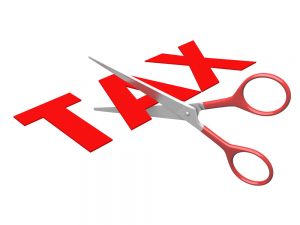
It’s mid of January and Employers has started asking their employees to submit proof of Investment and Expenses that qualifies for tax deduction and exemption under the Income Tax act.
It is employer responsibility to deduct TDS of Employees and deposit it to government every month. In order to deduct tax employer first ask the employees to declare the Tax saving investment and expenses like Tax saving mutual funds, Receipt of LIC, Receipt of donation, etc.
It is however employer’s responsibility to ensure that investments declared are true. Hence, it collects investment proof.
Employers usually consider the proof in the December and January months. Thereafter your investments are not considered and your incomes are taxed with higher amount. Though you can claim it as refund at the time of filing income tax return but funds are blocked for the months.
Almost 10 out of 100 employees fail to submit their all investment proof on time. Timely maintaining Proof of investments are important than maintaining it.
Provision for TDS on Salary.
192. 34(1) Any person responsible for paying any income chargeable under the head “Salaries” shall, at the time of payment, deduct income-tax on the amount payable at the average rate of income-tax computed on the basis of the rates in force for the financial year in which the payment is made, on the estimated income of the assessee under this head for that financial year.
(1A) Without prejudice to the provisions contained in sub-section (1), the person responsible for paying any income in the nature of a perquisite which is not provided for by way of monetary payment, referred to in clause (2) of section 17, may pay, at his option, tax on the whole or part of such income without making any deduction therefrom at the time when such tax was otherwise deductible under the provisions of sub-section (1).
(1B) For the purpose of paying tax under sub-section (1A), tax shall be determined at the average of income-tax computed on the basis of the rates in force for the financial year, on the income chargeable under the head “Salaries” including the income referred to in sub-section (1A), and the tax so payable shall be construed as if it were, a tax deductible at source, from the income under the head “Salaries” as per the provisions of sub-section (1), and shall be subject to the provisions of this Chapter.
(2) Where, during the financial year, an assessee is employed simultaneously under more than one employer, or where he has held successively employment under more than one employer, he may furnish to the person responsible for making the payment referred to in sub-section (1) (being one of the said employers as the assessee may, having regard to the circumstances of his case, choose), such details of the income under the head “Salaries” due or received by him from the other employer or employers, the tax deducted at source therefrom and such other particulars, in such form and verified in such manner as may be prescribed35, and thereupon the person responsible for making the payment referred to above shall take into account the details so furnished for the purposes of making the deduction under sub-section (1).
(2A) Where the assessee, being a Government servant or an employee in a company, co-operative society, local authority, university, institution, association or body is entitled to the relief under sub-section (1) ofsection 89, he may furnish to the person responsible for making the payment referred to in sub-section (1), such particulars, in such form and verified in such manner as may be prescribed36, and thereupon the person responsible as aforesaid shall compute the relief on the basis of such particulars and take it into account in making the deduction under sub-section (1).
Explanation.—For the purposes of this sub-section, “University” means a University established or incorporated by or under a Central, State or Provincial Act, and includes an institution declared under section 3 of the University Grants Commission Act, 1956 (3 of 1956), to be a University for the purposes of that Act.
(2B) Where an assessee who receives any income chargeable under the head “Salaries” has, in addition, any income chargeable under any other head of income (not being a loss under any such head other than the loss under the head “Income from house property”) for the same financial year, he may send to the person responsible for making the payment referred to in sub-section (1) the particulars of—
(a) such other income and of any tax deducted thereon under any other provision of this Chapter;
(b) the loss, if any, under the head “Income from house property”,
in such form and verified in such manner as may be prescribed37, and thereupon the person responsible as aforesaid shall take—
(i) such other income and tax, if any, deducted thereon; and
(ii) the loss, if any, under the head “Income from house property”,
also into account for the purposes of making the deduction under sub-section (1) :
Provided that this sub-section shall not in any case have the effect of reducing the tax deductible except where the loss under the head “Income from house property” has been taken into account, from income under the head “Salaries” below the amount that would be so deductible if the other income and the tax deducted thereon had not been taken into account.
(2C) A person responsible for paying any income chargeable under the head “Salaries” shall furnish to the person to whom such payment is made a statement giving correct and complete particulars of perquisites or profits in lieu of salary provided to him and the value thereof in such form and manner as may be prescribed38.
(2D) The person responsible for making the payment referred to in sub-section (1) shall, for the purposes of estimating income of the assessee or computing tax deductible under sub-section (1), obtain from the assessee the evidence or proof or particulars of prescribed claims (including claim for set-off of loss) under the provisions of the Act in such form and manner as may be prescribed.
(3) The person responsible for making the payment referred to in sub-section (1) or sub-section (1A) or sub-section (2) or sub-section (2A) or sub-section (2B) may, at the time of making any deduction, increase or reduce the amount to be deducted under this section for the purpose of adjusting any excess or deficiency arising out of any previous deduction or failure to deduct during the financial year.
(4) The trustees of a recognised provident fund, or any person authorised by the regulations of the fund to make payment of accumulated balances due to employees, shall, in cases where sub-rule (1) of rule 9 of Part A of the Fourth Schedule applies, at the time an accumulated balance due to an employee is paid, make therefrom the deduction provided in rule 10 of Part A of the Fourth Schedule.
39(5) Where any contribution made by an employer, including interest on such contributions, if any, in an approved superannuation fund is paid to the employee, tax on the amount so paid shall be deducted by the trustees of the fund to the extent provided in rule 6 of Part B of the Fourth Schedule.
(6) For the purposes of deduction of tax on salary payable in foreign currency, the value in rupees of such salary shall be calculated at the prescribed rate of exchange.
Keep reading! And reach out to us if you have any queries and you are looking for a CA in Gurgaon, GST Consultant in Gurgaon, Income Tax Consultant in Gurgaon for further clarification.







